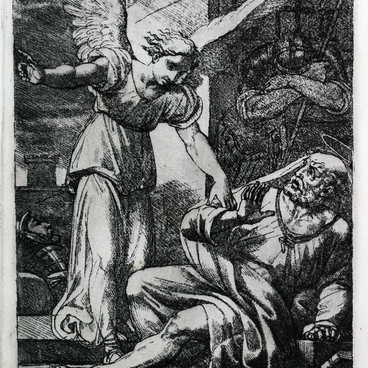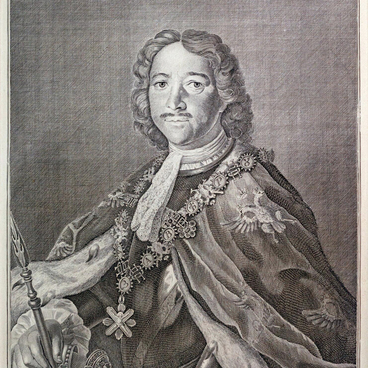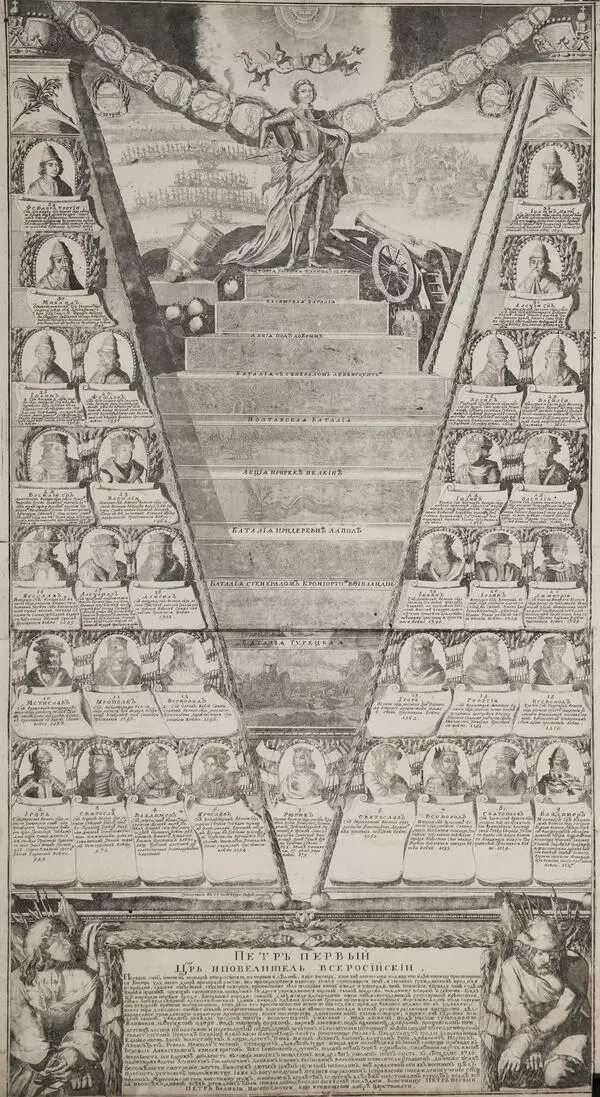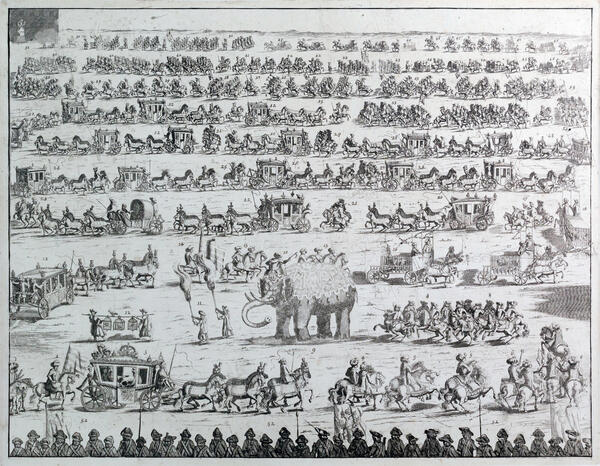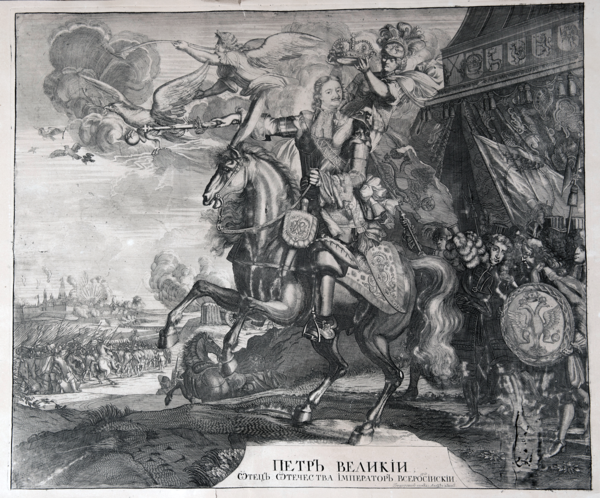The exhibition of the Irbit State Museum of Fine Arts includes an etching by Adriaan Schoonebeek titled “The Estate of Prince Fyodor Golovin in Moscow”.
It is known that before his death in September 1705, the famous Dutch artist Adriaan Schoonebeek was working on a very large etching depicting the estate of Fyodor Alexeyevich Golovin near Moscow, opposite the German settlement. After his death, the plates were completed by his students. The displayed print is considered the first etching in the “Russian Estate” series. For a long time, it was believed to have been created by Hendrick De Witt, based on an inscription on the wall of one of the buildings in the background, “In de witte fontuyn” (translated from Dutch as “At the white fountain”). However, this inscription is not the artist’s signature.
In the foreground, on the left bank of the Yauza River, there is a row of luxurious buildings surrounded by gardens. Golovin’s estate immediately catches the eye with its well-planned arrangement — a regular rectangular garden, smooth lines of plantings, and a straight alley from the entrance to the river. Golovin’s central palace, completed shortly before the etching was made, in 1703, is not highlighted in this image in any way. Only its side façade is visible. Beyond the river, on the right bank of the Yauza, there is the German settlement and the Le Fort Palace. Beyond the hills on the horizon, there is Moscow. Today, this area is the site of Krasnoznamennaya Street, near Lefortovsky Bridge. This masterful etching is one of Schoonebeck’s finest works.

